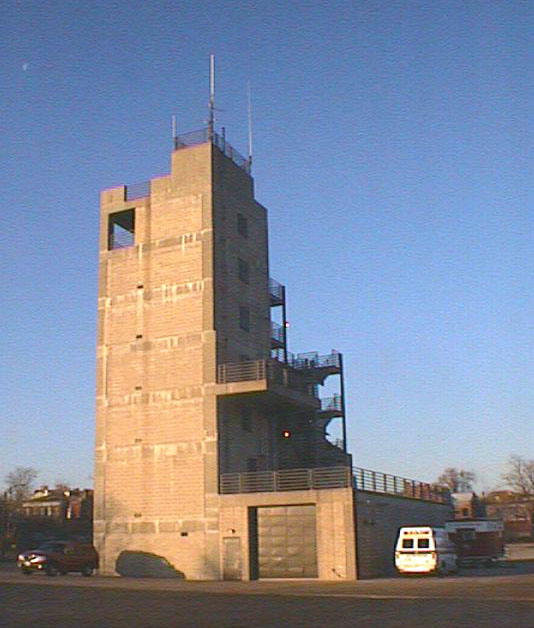St. Louis Fire Academy
Information about training provided by the St. Louis Fire Academy.

The St. Louis Fire Academy is the second oldest fire academy in the United States founded on July 16, 1926 with George P. Ward as the first Chief Instructor.
The original location of the Fire Academy was 1224 Spruce. In 1929, the Academy was moved to the third floor of 1125 Spruce. Still located there is a five story training tower. The training tower is equipped with multiple sprinkler and fire suppression systems, burn rooms to simulate just about any structure found in high angle rescue and confined space rescue scenarios, multiple roofs and multiple stories with hose connections to simulate high rise buildings.
Newly hired fire suppression personnel attending the Academy are referred to as recruits. Recruits attend the Academy for three months to improve their skills in fire science, safety, fire extinguishing systems, fire service hydraulics, vehicle extrication, physical endurance and much more.
Emergency medical technicians and paramedics attend the Academy for two weeks to prepare them for utilizing their medical training within the St. Louis Fire Department. This training is followed by six weeks of Academy supervised, hands-on training in the field.
While attending the Academy, recruits are trained and certified to Missouri State Firefighter I & II classification, Driver Certification and Hazardous Material Operations Level. Recruits are medically certified as Missouri First Responders which includes training in Cardio Pulmonary Resuscitation, Automatic Electronic Defibrillation and Basic Life Support.
Recruits receive intensive instruction requiring study beyond the classroom. Homework is given on a regular basis and must be completed as assigned. Recruit training at the St. Louis Fire Academy is the beginning of ongoing training required to maintain the intensive qualifications required of members of the St. Louis Fire Department.
To maintain the certifications earned as a recruit and as EMTs and paramedics, continued certified education is required. Firefighters must attend approximately 50 classroom hours a year. EMTs and paramedics must attend an average of 20 and 30 hours of classroom education a year respectively. These figures do not cover training on new equipment or other departmental training. The average firefighter attends one training session every ten days at work. The average EMT and paramedic attend a training session every 14 days at work.
The employee is responsible for finding educational opportunities and sponsoring member attendance to additional classes and seminars outside of the St. Louis Fire Department. Many firefighters become EMTs for the sole purpose of improving their job skills. Other courses taken by firefighters allow them to specialize in areas such as handling hazardous materials, high angle rescue, water rescue, vehicle and confined space extrication, terrorist incident mitigation and public education. Many EMTs and paramedics attend classes and seminars offered across the state and region just to stay current with new medical issues and practices.
The emergency medical field is continually progressing and the St. Louis Fire Department is active in several state organizations that help set state mandated emergency response protocol. Many members attend training on their own time when it is not provided by the department. Fire Department personnel have, and continue to show great dedication to their jobs.
A key point in a recruit's training is learning the responsibility of being a public servant. Recruits are trained to educate the public on how to react and respond to emergency situations. A public servant's duties do not end at the close of normal business hours. Firefighter and personnel's services are required around the clock. With continual advances in fire suppression and emergency medical care, firefighters, EMTs and paramedics continually work to update their training to better serve the public.
2 comments from people like you have helped us improve this page. Keep the feedback coming!